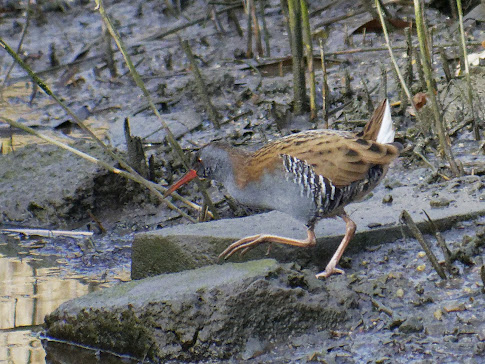An introduction to Lichens at St John’s Churchyard, Boldre
Thursday 9 December 2021
A record number of members turned up for this ‘walk’ (if approximately
250 yards in 2.5 hours - 0.06 mph - can be described thus!).
It was led by Duncan Wright, an enthusiastic member of
Lymington Naturalists until he moved to Petersfield in October 2019. During his
introduction he emphasised that the objective of the walk was not an I-spy
activity but rather to encourage people to look closely at lichen thereby hopefully
enhancing their natural history walks.
He accepted that lichens are very much a minority interest
when compared with birds, plants, insects (especially butterflies and moths)
and fungi because, for example, they are very small and have no generally accepted
non-scientific names. However, significant advantages for studying them include
not flying away, not dying back in the winter, not changing plumage and the fact
that they are everywhere – literally from the North Pole to the South Pole! All
that is needed to appreciate their beauty is inquisitiveness and a hand lens
(ideally 10x).
A hand out had been prepared to help participants focus on
the key features of lichens. This included a glossary of some of the terms used
to describe lichens along with some photographs (not to scale) of a few of the
common ones that could be seen in the churchyard, whether on trees or
headstones. It was stressed that species identification is not always possible
without the use of chemicals and microscopy.
The book Duncan used was:
Lichens: An Illustrated Guide to British and Irish Species by Frank S Dobson (7th edition) and published by British Lichen Society
There is also a pack of FSC illustrated information cards Wildlife Pack No 20 that is very useful.
 |
| A crustose lichen © Duncan Wright |
 |
| A foliose lichen © Glynis Payne |
 |
| A fruticose lichen © Richard Smith |
Duncan's Lichen id
checklist and glossary:
|
Location and Habitat
|
|
|
Growing on? (substrate)
|
|
|
Thallus* type* and size
|
|
|
Thallus colour (wet/dry?) Upper and lower surfaces
|
|
|
Lobes - Size? Turn up? Flat? Shape?
|
|
|
Thallus edge (prothallus*? thick/thin?) -- for crustose
|
|
|
Rhizines* -- appearance and location eg middle or
all over
|
|
|
Cilia*
|
|
|
Areoles*?
|
|
|
Soredia* -- where on thallus?
Isidia*
|
|
|
Pseudocyphellae* Maculae*
|
|
|
Apothecia*? Type*?
|
|
|
Anything else?
|
|
Thallus – the body of the
lichen containing fungal and algal cells
Thallus types (basic) –
foliose (leaf like), fruticose (shrub like, attached at only one point),
crustose (crusty)
Prothallus – margin of
crustose thallus without algal cells
Rhizines – root like
fungal filaments on lower surface of foliose thallus
Cilia – ‘eyelashes’ on
ends/margins of lobes
Areoles – islands formed
by cracks in the thallus. Grow together to form crazy paving appearance.
Soredia – small powdery
grains containing fungi and algae
Isidia – detachable
outgrowth on the thallus containing fungi and algae
Pseudocyphellae – pale
patch, dot or line on thallus
Maculae – blotchy/mottled
on thallus
Apothecia – fruiting body
Apothecia type – ‘jam tart’, ‘wine gum’, ‘squiggles’

































